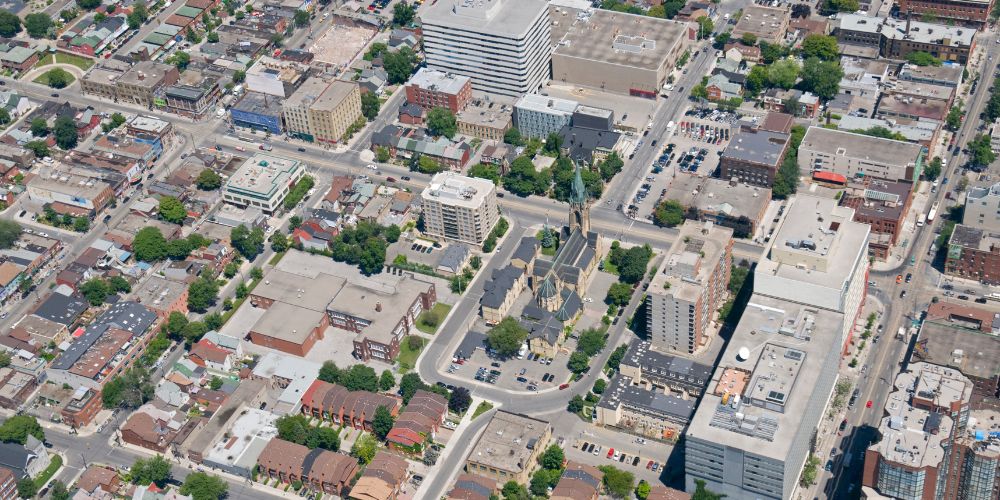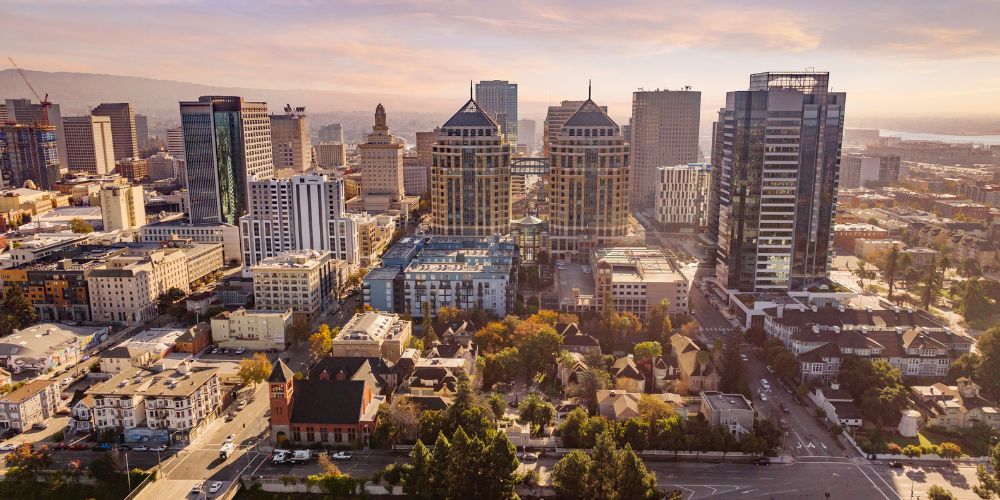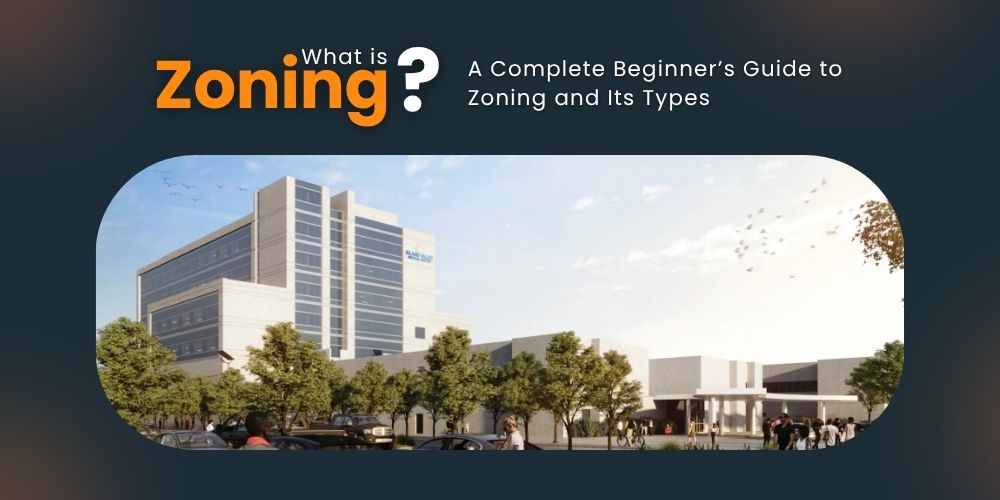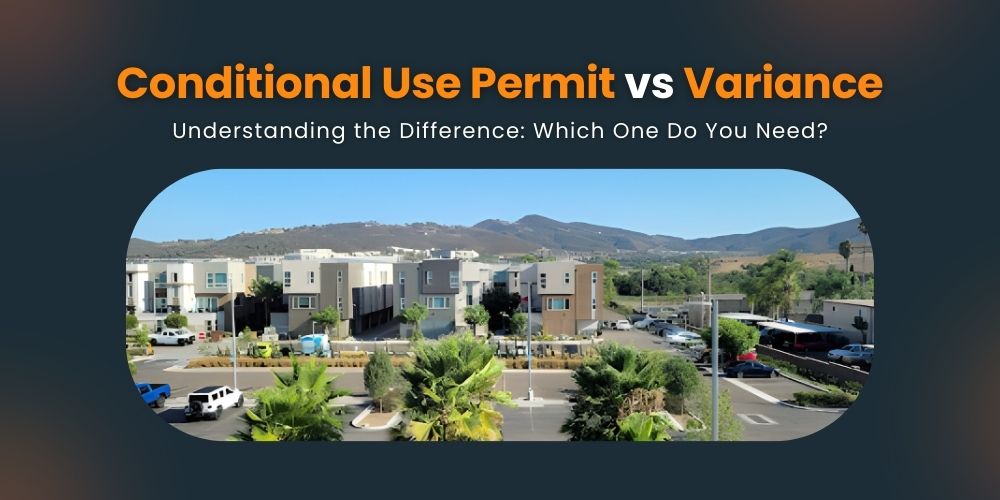You may have heard the terms “residential zoning,” “commercial zoning,” and so forth when looking to purchase a property or examining your own property as you try to decide what changes to make. So, what is zoning exactly? What are the different types of zoning, and how do these laws impact your plans for your property? Let’s find out more about these important issues.
What Is Zoning?
Think of zoning as the basic ground rules for how a property owner uses their land. This set of ordinances or laws regulates how a property can (and cannot) be used. More specifically, zoning laws tell you what type of building or structure can be erected on a certain piece of land based on its location.
In other words, you can’t normally build a distribution warehouse and truck terminal right in the middle of a residential subdivision due to most residential zoning laws (and the fact that your neighbors wouldn’t appreciate the noise and traffic).
Zoning laws might differ slightly from one municipality to the next, but you’ll find similar categories. You can differentiate between the categories by their letter and number. For example, “R” designates a residential area, “C” denotes a commercial spot, “M” or “I” is your industrial area, and of course, “A” stands for agricultural.
Another aspect of zoning to keep in mind is that the laws are not always permanent. In fact, you can petition the law-making bodies of your city or county via a Zone Change and General Plan Amendment to change or adjust the zoning of a property for different purposes.
Why Zoning Matters
Zoning laws are important to the well-being of any community. They impact property values, land development, and, to some degree, even public health. Ultimately, the rationale behind establishing zones is for a town or city to use the territory within its boundaries in the most efficient and ethical manner possible while promoting economic development.
Main Types of Zoning in California

Getting down to the specifics, California has seven general types of zoning. We’ll take a closer look at each category along with its respective subcategories.
Residential Zoning
Residential Zoning refers to housing, and while you might automatically think of a single-family home, other subcategories exist under this broad term. Let’s look at the following examples.
What is R1 Zoning?
Residential Single-unit Zoning or R1 designates a property for a single-family home. This set of regulations determines the lot size, setbacks, and the height of each house. With R1 zoning, you can expect limits on the number and size of any accessory buildings or structures (i.e.: sheds, gazebos, decks, etc.). The reasoning behind R1 is to protect privacy and to prevent overcrowding in a neighborhood.
What is R2 Zoning?
R2 Zoning signifies a property where you can build a two-family home such as a duplex. Another allowable instance is having two dwellings like a single-family home and a one or two-bedroom house on the same parcel.
What is R3 Zoning?
As you can see at this point, each community has its own laws designating how many dwellings are allowed per acre, which explains the number after the initial “R.” With the R3 Zoning, you’re looking at multi-family units, such as a triplex or an apartment building, townhouses, or condominiums.
What is R4 Zoning?
R4 Zoning defines an area where you’ll see a higher residential density. So, your apartment communities, for instance, with multiple buildings and their respective structures (parking lots, supervisor’s office, storage units, etc.) would fall under this category. More specifically, developers would have to differentiate between “Suburban Apartments” and “Multiple Family Residential” when obtaining a permit.
RR Zoning
Rural Residential or RR Zoning, in contrast to previous categories, regulates rural housing. It allows for larger lots for a single-family dwelling and in some cases, minor agricultural additions. These include any necessary outbuildings used for agricultural purposes, gardens, orchards, and areas for domestic animals. Also, some RR zones might allow for recreational amenities such as pools and tennis or basketball courts.
Agricultural Zoning
Generally, Agricultural Zoning, which differs from the RR Zoning category, is meant to preserve land for farming and other agricultural purposes while limiting some non-agricultural structures and usage. You’ll still see some single-family dwellings along with barns, stables, and other necessary additions, but in this case, more of the property is used to grow crops or support livestock.
What is A1 Zoning?
A1 Zoning upholds the integrity and rural traits of the area while allowing for some light agricultural use, such as cultivation of field or tree crops and truck farming. In other words, this category often includes a single-family dwelling, additions for equestrian-related activities, and even daycare facilities where “educational farming or gardening” takes place.
Commercial Zoning

Stepping away from the country and residential areas, we also have Commercial Zoning which indicates that a property is zoned for business use. As you may know, these properties allow for office and/or retail spaces, eateries, medical facilities, and service businesses. While you might encounter some properties that are zoned for multi-use, for the most part, you’d hardly see any residential dwellings depending on the location.
What is C1 Zoning?
Usually known as your traditional “mom-and-pop” small businesses, the C1 Zoning designates land dedicated to local, “neighborhood” stores, cafes, and salons.
What is C2 Zoning?
The C2 Zoning differs from your C1 in both size and location. The property has easy access from a roadway or is located near a high-traffic area. Here, you’ll find a small office complex, or a retail business, or a restaurant—anything that’s categorized as light industrial.
CR Zoning
The CR Zoning provides exclusively for multi-family residential use or a combination of multi-family units and business locations. This allows for specialty shops, offices, or other service businesses to be in the same building as the living units.
CM Zoning
CM Zoning allows for heavy commercial and some light industrial use. Typically, these properties are not what you might consider a business hub, but you might find businesses that offer supplies for various industries.
Industrial Zoning
Going beyond the realm of Commercial Zoning, your industrial parks and warehouses make up the Industrial Zoning category. As you can tell, these lots also tend to be much larger than even your CM zoned properties.
What is M1 Zoning?
The M1 Zoning is your basic, low-impact, low-intensity property. This category entails research and development facilities, warehouses, and some light manufacturing campuses. Because of their low degree of traffic and noise, the M1 Zone can be located near a residential area.
What is M2 Zoning?
As another light industrial category, your M2 Zones provide a buffer between the heavy industrial areas and other zones. For example, this zoning allows for recycling plants, warehouses for storage, and some light manufacturing facilities.
Mixed-Use and Urban Zoning
When exploring permitting and zoning issues, you’ll find other broad categories that relate specifically to the more populous areas—in other words, “the big cities.” Thus, you’ll hear a lot about Urban Zoning, which encompasses regulations related to residential, commercial, and industrial zones.
Mixed-use Zoning, likewise, falls under this umbrella. In the major cities, you’ll see many properties that fall under this category of regs. It’s exactly what the name says: a property that’s zoned for multiple purposes. A common example is the apartment high-rise with retail businesses, restaurants, and offices on the ground floor.
Public Facilities & Institutional Zoning
Another category of zoning that you’ll find in both urban and suburban areas is the Public Facilities and Institutional Zoning. This entails your local government buildings, schools, places of worship, and museums.
Open Space & Conservation Zones
Open Spaces and Conservation Zones involve undeveloped land that’s either publicly or privately owned but set aside to preserve cultural heritage, scenic beauty, and wildlife. Urban green spaces also fall into this category as well as some recreational areas.
Also Read: Guide to Discretionary Permit Process in California
Conclusion
From what we’ve seen, zoning can get complicated in California, which is why you’ll need to consult with an expert in permits and entitlements like Strom Permit as you search for that perfect property that suits your purpose or as you plan for changes to the structures on your property.




